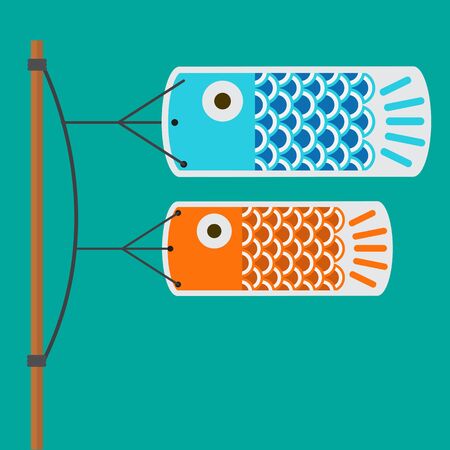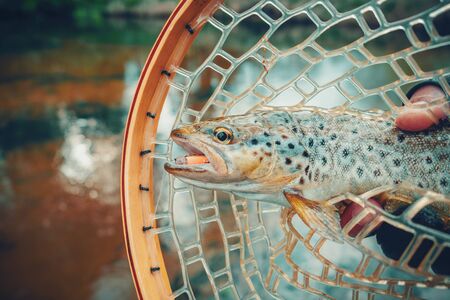Introduction to Scottish Salmon Fly Fishing
Salmon fly fishing in Scotland is more than just a pastime; it is an enduring tradition woven into the very fabric of British angling culture. Steeped in history, the pursuit of the iconic Atlantic salmon has attracted generations of anglers to Scotlands legendary rivers such as the Tweed, Tay, and Spey. This time-honoured sport not only offers the thrill of the chase but also celebrates a deep respect for nature and conservation. Over centuries, Scottish salmon fly fishing has evolved with distinctive techniques, local fly patterns, and etiquette that reflect both the rugged beauty of the Highlands and the refined sensibilities of British sporting life. Today, it stands as a cultural symbol—one that connects communities, supports rural economies, and continues to capture the imagination of both locals and visiting enthusiasts alike.
Understanding the Scottish Salmon Seasons
To truly maximise your chances of success when salmon fly fishing in Scotland, it’s essential to understand how the salmon runs unfold throughout the year and how each season shapes both the fish’s behaviour and your angling tactics. The Scottish salmon season typically spans from early spring right through to late autumn, with distinct characteristics and opportunities in each phase.
Breakdown of Annual Salmon Runs
The journey of Atlantic salmon in Scottish rivers is dictated by their natural lifecycle, with three main seasonal runs:
| Season | Main Features | Typical Behaviour | Prime Rivers |
|---|---|---|---|
| Spring (Feb – May) | Early ‘springers’ enter rivers | Fresh, powerful fish; less numerous, but highly prized for their quality | Tay, Dee, Tweed |
| Summer (June – August) | Steady build-up of numbers; grilse appear | Livelier fish; often more active during cooler spells or after rain | Spey, Ness, Earn |
| Autumn (Sept – Oct/Nov) | Main run peaks; fish prepare to spawn | Darker, mature salmon; aggressive, territorial behaviour increases strike rates | Tweed, Tay, Nith |
Key Differences Between Spring, Summer, and Autumn Windows
Spring fishing is all about patience and persistence. Early-season waters are cold and clear, so salmon move slowly and tend to lie deep. Heavier flies and slower retrieves are usually required. Summer offers more consistent sport, particularly as water temperatures rise and rainfall triggers new runs. Fish may be more dispersed and active at dawn or dusk. Autumn brings the most prolific action, with larger numbers entering rivers and heightened aggression as spawning approaches—making this prime time for classic fly presentations and bold tactics.
How the Seasons Affect Salmon Behaviour
The shifting conditions of each season—water temperature, flow rates, daylight hours—all influence salmon movement and feeding patterns. In spring, low temperatures can make fish lethargic. Come summer, increased warmth and occasional freshets encourage migration upstream. By autumn, territorial instincts take over: salmon become more aggressive, defending spawning grounds and responding eagerly to well-presented flies. Understanding these nuances is key to tailoring your approach—and ultimately landing that unforgettable Scottish salmon.

3. Prime Rivers and Regional Variations
When it comes to salmon fly fishing in Scotland, understanding the individual character of each major river is key to planning a successful trip. Four rivers dominate the Scottish salmon scene: the Spey, Dee, Tay, and Tweed. Each offers its own distinct angling experience shaped by local climate patterns, seasonal flows, and unique river conditions.
The River Spey: Swift Currents and Early Runs
Located in the heart of the Highlands, the River Spey is world-renowned for its fast-flowing waters and classic fly-fishing heritage. The Spey is among the earliest rivers to see a salmon run, with action often starting as early as February or March. The local climate here means water levels can rise quickly with spring snowmelt, creating ideal conditions for fresh-run fish. Traditional Spey flies and long rods are favoured by locals who know that timing their visit after a mild thaw can produce exceptional sport.
The River Dee: Crystal Waters and Spring Silver
Flowing through Aberdeenshire, the Dee is famed for its clear waters and strong spring runs. Typically, the season kicks off in February, but it’s April and May when seasoned anglers flock here for the best chance at catching ‘springers’—freshly arrived Atlantic salmon known for their power and brilliance. The river’s granite bed ensures stable water clarity even after rain, making sight-fishing possible on bright days. Local ghillies recommend lightweight tackle and subtle fly patterns to match the clear conditions.
The River Tay: Consistency and Record Breakers
The mighty Tay holds a reputation as Scotland’s most reliable big fish river. Its season starts in January, peaking from June through September when grilse (young salmon) join larger multi-sea-winter fish. Thanks to its size and consistent flow—fed by Loch Tay—the river fishes well throughout the summer regardless of rainfall. Anglers often deploy heavier lines and robust flies to cope with deeper pools and powerful currents. Local knowledge suggests targeting tributaries during low water for surprising results.
The River Tweed: Autumn Abundance
Straddling the border with England, the Tweed is revered for its prolific autumn run. From September to November, this stretch sees huge numbers of salmon ascending to spawn—making it a must-visit for late-season sport. The region’s milder climate keeps water temperatures optimal well into autumn. Fishing here is a social affair, with local beats offering expert guidance on fly selection as conditions shift from crisp mornings to golden afternoons.
Local Tips: Reading Water and Weather
Scotland’s ever-changing weather plays a pivotal role in shaping each river’s mood. Successful anglers keep an eye on recent rainfall, snowmelt forecasts, and even wind direction—which can dictate where salmon hold in pools or runs. Tap into local advice from ghillies or fellow rod holders; their insight into subtle shifts in river colour or temperature can be the difference between a blank day and a memorable catch.
4. Essential Gear and Local Flies
When targeting Atlantic salmon in Scotland, local knowledge shapes the choice of tackle, flies, and techniques. The right gear not only improves your chances but also respects regional traditions and water conditions.
Tackle Essentials for Scottish Salmon Rivers
| Item | Recommended Specification | Why It Matters |
|---|---|---|
| Rod | Double-handed (13-15ft) or Switch rod | Ideal for covering broad rivers and long casts typical of Scottish beats |
| Reel | Large-arbour, strong drag system | Handles powerful runs of fresh salmon and variable river flows |
| Line | Shooting head or Spey line; floating/sink-tip options | Adapts to seasonal water heights and different pools |
| Tippet/Leader | 10-18lb fluorocarbon or copolymer | Balances strength with stealth in clear waters |
Regional Fly Patterns: What Works and Where?
Scottish fly anglers are fiercely proud of their local patterns, many of which have been honed over centuries. The choice of fly is influenced by season, river colour, and light conditions. Here’s a breakdown of some of the most successful flies across key regions:
| Region | Popular Fly Patterns | Main Features & Usage |
|---|---|---|
| The Dee & Don (Aberdeenshire) | Dee Monkey, Park Shrimp, Ally’s Shrimp | Lively movement; bright colours for spring; darker, subtle tones in summer/autumn |
| The Spey (Moray) | Cascade, Tosh, Willie Gunn | Tied on tubes or doubles; works well in varying water clarity; gold and orange hues excel in peaty water |
| The Tay (Perthshire) | Purple Cascade, Flamethrower, Sunray Shadow | Larger tubes early season; smaller doubles later; flashy patterns for big springers |
Technique Tips from Scottish Anglers
- Early season (February-April): Fish deep and slow with weighted tubes as rivers run high and cold.
- Summer months: Shift to smaller flies or singles/doubles; a stealthier approach is crucial as water clears.
- Lifting and drawing techniques: Particularly effective on classic Scottish pools with a steady current.
A Local’s Insight:
“If in doubt, start with an Ally’s Shrimp – it’s rarely refused on any Scottish river.” This reflects the importance of local fly patterns and adapting them according to river lore rather than just theory.
5. Local Knowledge: Tips for Timing Your Trip
If you truly want to maximise your chances of landing a prized Scottish salmon, nothing beats the wisdom of local ghillies and seasoned anglers. These river experts have spent decades observing the subtle rhythms of Scotland’s waterways, and their insights are invaluable for planning a successful trip.
Advice from Ghillies and Locals
Scottish ghillies are custodians of the rivers, often with generations of experience passed down through families. According to many ghillies on famous rivers like the Dee and Tay, timing is everything. They recommend speaking directly to local guides before your trip—many will happily share up-to-date information about current runs, water conditions, and which beats are fishing well.
Understanding Salmon Runs
Salmon runs in Scotland can be influenced by several factors including rainfall, river temperature, and even lunar cycles. A prolonged dry spell might delay a run, while a fresh spate can suddenly bring fish upriver in numbers. Experienced locals advise monitoring river levels online or via local angling associations in the weeks leading up to your visit.
Maximising Your Chances
To give yourself the best odds, flexibility is key. Be prepared to adjust your dates at short notice if water conditions change. Bookings midweek can also increase access to less-pressured beats. Early mornings and late evenings are prime times when salmon are most active—so set your alarm early and don’t pack up too soon in the evening.
Lastly, trust the advice of your ghillie on fly selection and presentation; they’ll know what’s working that day. With a combination of strategic planning and local knowledge, you’ll significantly boost your chances of experiencing classic Scottish salmon sport.
6. Etiquette and Conservation
Salmon fly fishing in Scotland is steeped in a deep respect for both tradition and the natural environment, making etiquette and conservation fundamental to the sport. Understanding these unwritten rules is just as important as mastering your casting technique—especially when considering the long-term sustainability of Scotland’s legendary salmon rivers.
Respecting Local Traditions
Anglers are expected to honour age-old customs that have shaped Scottish salmon fishing for generations. It’s customary, for instance, to greet fellow anglers courteously on the riverbank and to take turns when approaching productive pools—a practice known locally as “fishing through” the beat. Wearing traditional tweeds or muted clothing not only pays homage to local culture but also helps you blend into the landscape, minimising disturbance to wary fish.
Unspoken Rules on the Water
Beyond formal regulations, there exists a code of conduct that every responsible angler should follow. Always seek permission before accessing private water, and never trespass on land without consent. When landing a fish, handle it with care—use barbless hooks where possible and return wild salmon swiftly to the water to maximise their chances of survival. Remember, it’s generally frowned upon to keep more than your fair share; many beats now operate strict catch-and-release policies, particularly during vulnerable periods in the season.
Championing Conservation Efforts
Sustainable fishing is at the heart of Scotland’s approach. Many rivers are managed by local trusts and associations dedicated to preserving salmon stocks for future generations. Anglers are encouraged to participate in habitat restoration projects, support river clean-up days, and report any signs of pollution or illegal fishing activity. By adhering to seasonal guidelines—such as respecting closed seasons during spawning runs—you play an active role in protecting this iconic species.
Looking Ahead: Ensuring a Future for Scottish Salmon
The commitment to etiquette and conservation ensures that Scotland remains one of the world’s premier destinations for salmon fly fishing. By embracing these practices and passing them on to newcomers, we not only preserve the thrill of the sport but also safeguard Scotland’s wild salmon for generations yet to come.
7. Planning Your Scottish Fishing Adventure
Embarking on a salmon fly fishing trip to Scotland demands more than simply packing your favourite rod and tying a few flies. To ensure your angling experience is both successful and seamless, it’s crucial to approach the planning process with a local mindset and strategic forethought.
Securing Prime Beats
Scotland’s rivers are divided into “beats”—stretches of water managed by estates or angling associations. The most productive beats, especially those on legendary rivers such as the Spey, Dee, Tay, and Tweed, can be booked up months (or even years) in advance for peak weeks. Start your research early; websites like FishPal offer real-time availability and detailed beat descriptions. Consider shoulder seasons if you’re seeking a balance between value and quality sport.
Accommodation: From Bothies to Boutique Lodges
Where you stay can greatly influence the rhythm of your fishing days. Traditional fishing bothies provide rustic charm and proximity to the water, while country inns and boutique lodges offer comfort and hearty Scottish fare after a long day on the riverbank. Book accommodation close to your chosen beat to minimise travel time—some packages even include guided fishing and local ghillie services for that authentic Scottish touch.
Navigating Local Regulations
Scottish salmon fishing is governed by strict conservation laws aimed at preserving these iconic fish. Always obtain the necessary permits for each beat, which may include both a beat permit and a District Salmon Fishery Board (DSFB) levy. Catch-and-release is now standard on many rivers—familiarise yourself with individual river rules regarding fly patterns, barbless hooks, and mandatory release periods. Respecting these regulations not only protects wild stocks but also ensures you’re welcomed back year after year.
Local Etiquette and Practical Tips
Engage with local ghillies; their knowledge of river conditions, fly choices, and holding lies is invaluable. Be prepared for unpredictable weather—layered clothing and waterproofs are essential kit in Scotland’s changeable climate. Finally, embrace the culture: enjoy a dram with fellow anglers at day’s end and immerse yourself in the storied tradition of Scottish salmon fishing.
By blending tactical preparation with respect for local practices, you’ll maximise both your chances of landing a prized Atlantic salmon and your appreciation for Scotland’s remarkable angling heritage.


